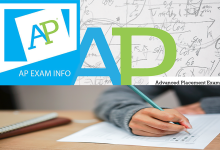Student Loan Debt Cancellation And Forgiveness Update

Student Loan Debt Cancellation And Forgiveness Update
The U.S. Department of Education intends to offer PELL Grant recipients up to $20,000 in debt cancellation and non-PELL Grant recipients up to $10,000 in debt cancellation.
By signing into their federal student assistance account at studentaid.gov, students can verify their academic record and PELL Grant recipient status.
In a significant turn of events, the Supreme Court, in June 2023, dealt a decisive blow to Biden’s loan forgiveness plan. If you had been counting on this initiative to alleviate your Parent PLUS loans, it’s essential to understand that the anticipated relief is no longer on the horizon.
Parents and students may qualify for a one-time debt cancellation if their federal undergraduate, graduate, and Parent PLUS loans have been fully disbursed before June 30, 2022.
The Department of Education may already have your income information on file, so if you filed an FAFSA, you might be immediately eligible for debt reduction for current students.
You can submit an application, which will be available in early October if the Department of Education does not have your income information.
Beware of scammers. A company might contact you and promise to help you receive debt relief, cancellation, forgiveness, or discharge in exchange for a fee. This is a fake. (You never have to pay for assistance when using your federal student aid.)
Never provide your account login or personal information to outside parties, and make sure you only do business with ED and your loan servicers. (For borrowers, ed.gov@public.govdelivery.com, noreply@debtrelief.studentaid.gov, and noreply@studentaid.gov are verified email addresses.)
Eligibility Requirements:
1. To qualify, your yearly income must be less than $125,000 for single people or $250,000 for married couples or heads of households.
2. If you fulfilled the income requirements and were awarded a Pell Grant during your college years, you could be qualified for debt cancellation of up to $20,000.
3. Should you have met the income requirements and not been awarded a Pell Grant throughout your college years, you could be qualified for debt cancellation of up to $10,000.
What should you do right now?
To verify your status as a recipient of a PELL Grant and federal loan, log into your Federal Student Aid account. Verify that your contact details are current. You go to studentaid.gov and register for an account.
Visit the Department of Education’s subscription website to sign up for notifications.
To receive assistance before the payment halt expires on December 31, 2022, all federal loan borrowers are encouraged to apply by November 15, 2022.
Public Service Loan Forgiveness (PSLF)
The PSLF forgives qualifying federal student loans after ten years of employment with an eligible public sector employer and 120 qualifying payments.
You may be qualified for the PSLF Programme if you work or have worked in public service, such as for the federal government, the US military, a state, local government, or a tribe.
How to qualify for Public Service Loan Forgiveness
Verify your eligibility: To determine what to do next, use the PSLF Help Tool. The U.S. Department of Education (ED) is offering this tool for free. To prove that you are employed in a qualifying position and to get credit for your monthly contributions, fill out the papers that the PSLF Help Tool suggests.
Verify that you have the appropriate loans. With PSLF, only federal direct loans are eligible for forgiveness. By combining your previous federal student loans into a new federal Direct Consolidation Loan, you can be eligible for PSLF if you also have Federal Family Education Loans (FFEL) or Perkins Loans. Visit the Department of Education’s website to find out more information on consolidation.
Save documentation of your payments: Keep a copy of your monthly statements or digital receipts for each payment.
Verify the amount you paid. You can track your progress towards 120 qualifying payments with the PSLF Help Tool. Make sure it corresponds with your records by checking it frequently. You don’t need to make the 120 qualifying payments in a row.
Remember: Many borrowers have complained that the payment totals provided by their servicers do not line up with their records. To try to fix this, get in touch with the service provider. If this occurs, file a complaint with the Federal Student Aid (FSA) or the Consumer Financial Protection Bureau (CFPB).
Know About the Payment Pause Under the CARES Act: As long as you fulfil all other requirements, paused payments are considered part of PSLF. Credit will be granted to you as if you had paid monthly. To learn more about PSLF and the payment delay, visit ED.
Ask for reimbursement for delays and pauses. Extended durations of forbearance and deferments made before 2013 will be automatically recognized as qualified payments. File a complaint with the FSA Ombudsman to receive credit for shorter forbearances lasting less than 12 months consecutively or fewer than 36 months overall.
(Note: Your PSLF loan payment count may be impacted by recent modifications to IDR programs. (For further information, go to the Department of Education’s website.)
Make a yearly reminder to complete your documentation. Every year, you will have to recertify your income-driven repayment plan. Additionally, we advise you to recertify your employment annually. The PSLF Help Tool will direct you to the necessary paperwork, which you must fill out and submit.
If you are not accepted, you can appeal. To request that your PSLF/TEPSLF refusal be reviewed, ED provides an online form. Get details about the payments you think ought to be counted before filling out the form.
This contains the dates of these payments, tax data for your public service employer at the time, and electronic documentation of your job and payments, including W2 forms and loan servicer letters or statements.
Avoid going into default: You will need to combine or rehabilitate your federal loans if they go into default to get your credit back up to par and be eligible for PSLF. Compare the possible best options for yourself.
Income-driven repayment forgiveness
At least one income-driven repayment plan is available for the majority of federal student loans. Plans for income-driven repayment (IDR) set a monthly payment cap based on your family size and income.
Should your income be sufficiently low, your monthly payment can be as little as $0. After 20 or 25 years of payments, the remaining amount on your debts may be forgiven, depending on the terms of the IDR plan.
Fixing IDR loan forgiveness with a one-time change
The Department of Education (ED) released some revisions and modifications on April 19, 2022, which will get borrowers closer to forgiveness under IDR programmes.
To count any month spent in repayment, some deferment periods (before 2013), and certain forbearance periods towards loan forgiveness, ED will make a one-time adjustment.
These adjustments will result in an extra year of credit towards loan forgiveness for certain borrowers. Your loans might be promptly forgiven if you have been repaying them for longer than 20 or 25 years.
In the spring of 2023, borrowers who have made payments for IDR forgiveness for 20 or 25 years (240 or 300 months) may be eligible to have their loans cancelled. As soon as borrowers complete the necessary number of months for forgiveness, ED will continue to discharge loans. In 2024, all other borrowers will notice updates to their loan accounts.
What loans qualify for the IDR one-time adjustment?
The one-time IDR adjustment is only applicable to federal student loans that are overseen by the Department of Education (ED).
The one-time account adjustment will not require borrowers with direct loans or federally managed FFELP loans to take any action to be eligible.
Regardless of whether the loans are presently on an IDR plan or not, any borrower with ED-held debts who has accrued at least 20 or 25 years of repayment time will automatically qualify for forgiveness.
Consolidating into Direct Loans can be advantageous for borrowers with FFELP loans held by commercial lenders or Perkins loans not owned by ED.
For borrowers to take advantage of the one-time IDR account adjustment, they must consolidate by the end of 2023. Both online and paper applications are accepted for direct consolidation loans by borrowers.
How to enrol in an income-driven repayment plan
It could be possible for you to sign up for an online IDR plan if you have federal student loans. Your loan types can be found on the Department of Education’s (ED) online IDR plan enrolment page. If you need to sign up for an income-driven repayment plan, this is the ideal place to start.
Hints: Are you unsure of the kind of debt you have? Using your FSA ID, log into StudentAid.gov and choose “My Aid” under your name. Your federal loan amounts, as well as whether they are direct or commercial FFELP, will be shown on that page. Get in touch with your student loan servicer for additional details.
The borrower of student loans will not be required to pay any fees to be eligible for loan forgiveness. It’s a fraud if someone requests payment to cancel your debt. What is considered part of the 20 or 25 years needed to be pardoned by IDR?
Any months where there has been a delay in loan payback (independent of the amount paid, type of loan, or repayment arrangement).
- Twelve or more months of forbearance in a row, or thirty-six months total.
- Months after 2013, they were lost to deferments from the military or economic hardship.
- Months of postponement (except from in-school deferment) before 2013.
- Any time spent repaying aggregated loans before consolidation.
Timelines for IDR plan repayments
| Plan | Repayment terms and forgiveness |
|---|---|
|
Revised Pay As You Earn (REPAYE) |
20 years, if all of the loans you are paying back through the plan were taken out for undergraduate education. After 20 years, the outstanding balance will be waived. 25 years if the loans you’re paying back under the plan were taken out for professional or graduate school. After 25 years, the remaining balance will be waived. |
|
Pay As You Earn (PAYE) |
20 years. After 20 years, the remaining amount will be waived. |
|
Income-Based Repayment (IBR) |
20 years, if you became a new borrower on July 1, 2014, or later. After 20 years, the outstanding balance will be waived. 25 years if, on or after July 1, 2014, you are not a new borrower. After 25 years, the remaining balance will be waived. |
|
Income-contingent repayment (ICR) |
25 years. After 25 years, the remaining balance will be waived. |
Student Loan Cancellation
On June 30, 2023, the Supreme Court rendered a decision that forbade Biden from pursuing his one-time student debt relief scheme. As a result, no debt could be erased through this programme.
September 1, 2023, is when interest on federal student loans will begin to accrue, and October is when the first payments are due.
The Department of Education will think about how to make sure that borrowers who make payments don’t lose their eligibility for debt relief while creating a new programme. For updates, please visit the Federal Student Aid debt relief page.
Biden-Harris Debt Relief Plan
The administration of President Joe Biden and Kamala Harris announced on August 24, 2022, that it would offer targeted cancellation of student loan debt to borrowers whose loans are held by the Department of Education.
Additionally, it extended the suspension of student loan repayment, interest, and collections for a final time until December 31, 2022.
For single borrowers earning less than $125,000 or households earning less than $250,000 during the pandemic, President Biden has set a $10,000 restriction on loan cancellation.
Current students and borrowers with federally owned graduate, undergraduate, and Parent PLUS loans whose initial disbursement occurred on or before June 30, 2022, are eligible for relief.
(Relief will be granted to borrowers who were dependent students in 2021–2022; the basis for eligibility will be their parents’ income rather than their own.)
Forgiveness of up to $20,000 will be granted to borrowers who meet the income limitations and also obtain Pell Grants, which add $10,000.
By heading to Workday, selecting Student Financial Aid, and then Financial Aid Portal, current Brandeis students can obtain information on their loans and Pell Grants. Alumni from Brandeis University can access their loan and Pell grant details by visiting the FSA website.

FAQs
Can student loan debt be cancelled?
You may be eligible to have your federal student loans dismissed, cancelled, or forgiven under specific circumstances. This implies that you will be exempt from repaying any or all of your loan(s).
How will I know if my student loan will be forgiven?
If my student loans are forgiven, how will I know? A notification letter will be sent to you by the loan servicer or Department of Education if you are eligible for loan forgiveness under PSLF, Teacher Loan Forgiveness, or IDR discharge. Your account settings will determine whether to get the letter by mail or electronically.
How much is student debt in America?
How can I pay off my student loans?
- Be mindful of your debts.
- Check that your loans and payment plan fit together.
- Check to see if the government repayment plan is the most advantageous for you.
- 0.25% off your interest rate can be obtained by setting up a direct debit, often known as an autopsy.
- Keep communicating with your service provider.
- Make accurate records.
Should I pay off my student loans?
There are several advantages to paying off your student loans quickly. Your debt-to-income (DTI) ratio will decrease, and you will save money on interest on your student loans, allowing you to pay off debt sooner.
More disposable income and a greater DTI ratio would allow you to work towards other financial objectives, including home ownership or retirement savings.














